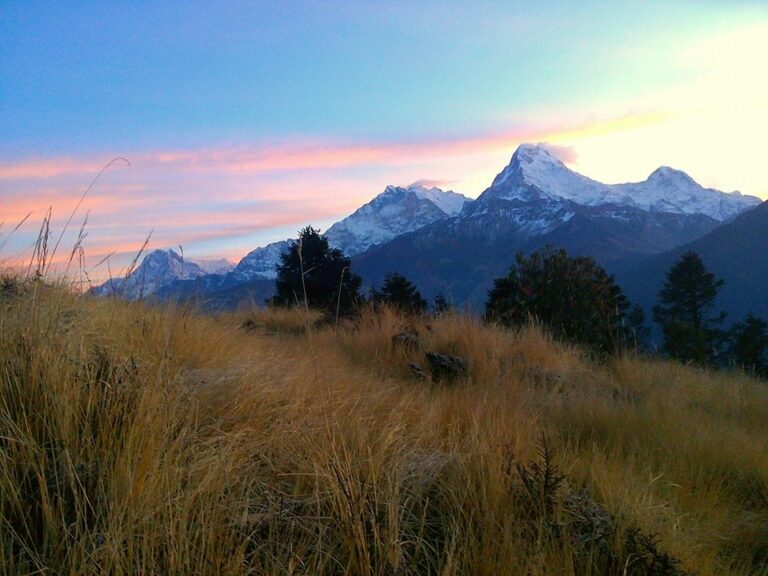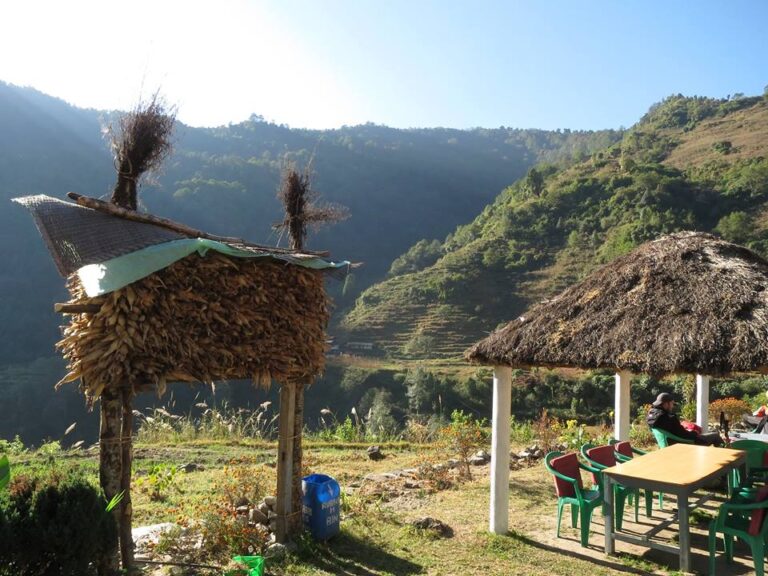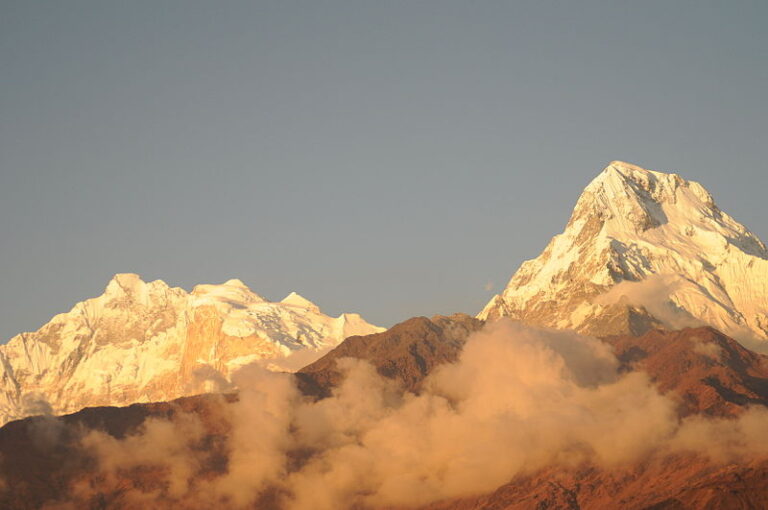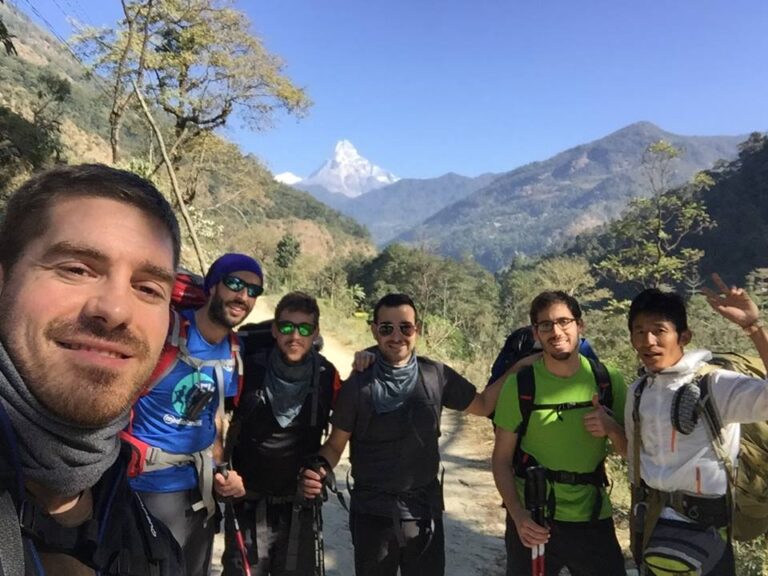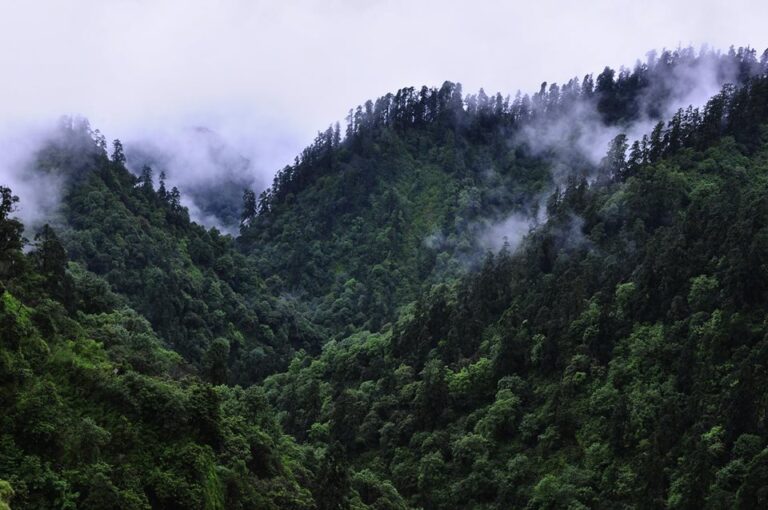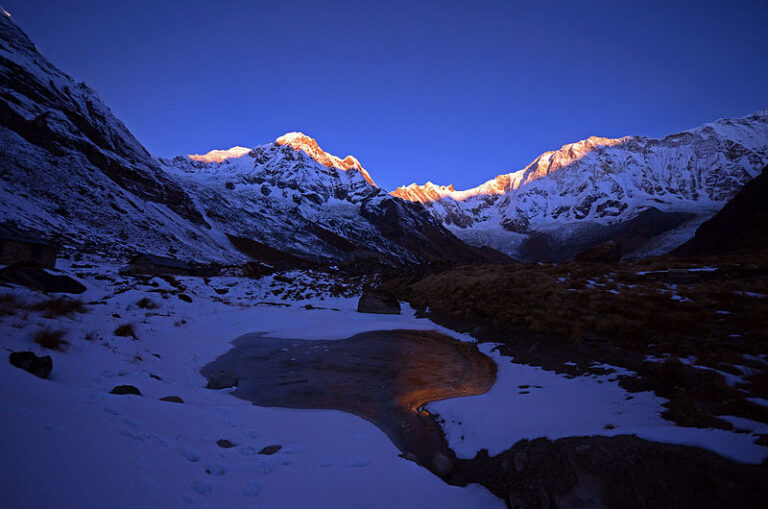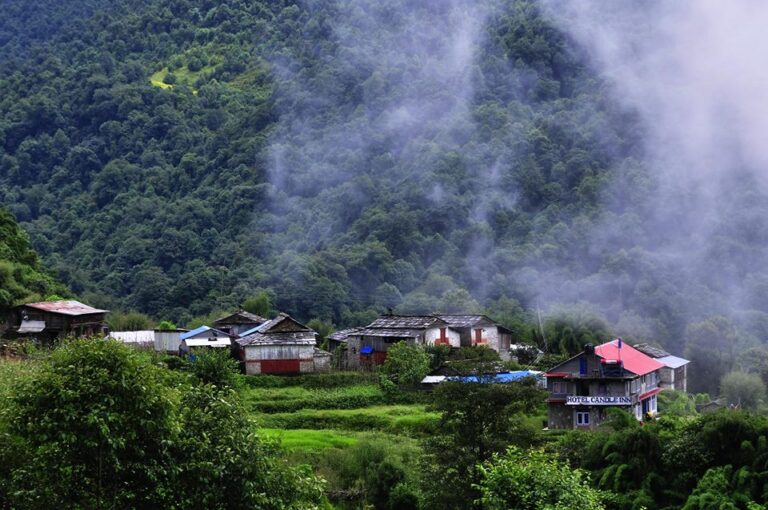Day 01 – On your arrival date of Kathmandu, we will pick you from the Tribhuwan International Airport and escort to hotel. Your hotel will locate in center of the Thamel, which is one of the tourist hubs in Kathmandu valley.
Day 02 – Sightseeing in Kathmandu valley – Sight trip to the historical and ancient places of Kathmandu Valley like Pashupatinath Hindu Temple, Boudhanath Stupa, Patan Durbar Square and Swayambhunath Stupa, which is also known as Monkey Temple due to moving hundreds of monkeys around the temple compound.
Day 03 – Drive to Pokhara (820m.a.s.l) – 6 to 7 hours drive – Pokhara is 204 kilometers far from Kathmandu and the drive takes about 6 to 7 hours will depend on our transportation. During the driving period, we will have beautiful views of terraced field, Green landscapes, Trishuli River valley and massif view of Annapurna, Ganesha Himal and Manaslu mountain ranges.
Day 04 – Drive to Kande and trek to Pritam Deurali village (2210m.a.s.l) – 1:15 hour drive and 3 hours walk – We will drive an approximately one and half hours to get Kande village with stunning view of Mardi Himal, Machhapuchre, Hiuchuli, Annapurna II and south Annapurna. The trail gently ascends from Kande village and one and half hours walk bring us to a beautiful place called Australian camp that offers to see splendid view of Annapurna south, Hiuchuli, Machhapuchre, Mardi Himal, Dhaulagiri, Manaslu and its beautiful ranges. From Australian camp; we have to walk through the forest of Rhododendron, Sandalwood, Chestnuts to get Pritam Deurali village
Day 05 – Trek to Forest camp (2530m.a.s.l) – 6 hours walk -The morning; commands to see stunning view of Annapurna south and Hiuchuli to the northeast and a beautiful view of green forest to the southwards of Pritam Deurali village. Trek from Pritam Deurali to Forest camp may takes an approximately 5 hours and have to walk through the dense forest of Pine, oaks, Chestnuts, Bamboo, Rhododendron, Magnolia and sandalwood so along the trekking trail trekkers get great chance to see many species of birds, butterflies and some of the wild life such as monkeys, deer and mussels. Begins of the trek; trekkers have to climb up an approximately three hours then appear a small tea shop then rest of the trek would be very pleasant due to walk on the flat trail and magnificent view of mountains vistas. There are three guesthouses in forest camp and offers comfortable bed and delicious meals with great hospitality.
Day 06 – Trek to High camp (3540m.a.s.l) – 5 hours walk – The trail gently ascend from the yard of the guesthouse and leads us through the lush forest of Rhododendron to get a beautiful place called Badaldanda; which is located just top of the hill and offers to see splendors of Annapurna II, Mardi Himal, south Annapurna, Hiuchuli, Machhapuchhre (Fishtail) and its beautiful ranges. From Badaldanda we will head towards Mardi Himal high camp pass by several hills and moraines; which may takes an approximately two hours. There are half dozens of guesthouse in high camp to spend joyful night.
Day 07– Sight trip to Mardi Himal base camp (4450m.a.s.l.) – 7 hours round trip – The trail gently ascend from the yard of the guesthouse and passes through the vertical moraines so we have to be very careful. Trek from high camp to Mardi Himal base camp takes about four hours, will depend on our walking speed, health condition and physical fitness. The Mardi Himal base camp is a beautiful viewpoint that offers to see splendid view of Annapurna south, Hiuchuli, Machhapuchhre, Baraha shikhar, Annapurna fang, Mardi Himal, Annapurna I and awesome view of Machhapuchhre and Annapurna base camp.
Day 08 – Trek down to Forest camp (2530m.a.s.l) – 4 hours walk – The morning offers to see beautiful sunrise views on the background of Machhapuchhre, Hiuchuli and on the Annapurna mountain ranges. After prehensile moment trekkers head down to Forest camp through the rugged moraines, picturesque viewpoints that commands to see charms landscapes, green forest and dozens of villages. Most of the time trekkers walk down through the dense forest of rhododendron and Bamboo so possibly to see many species of birds and butterflies.
Day 09 – Trek down to Landruk village (1680m.a.s.l) – 3 hours walk – Landruk is a beautiful Gurung village and one of the tourist hub of Annapurna base camp trekking trail so there are dozens of good guest houses and offers comfortable bedrooms and hygienic meals. Trek from Forest camp to Landruk may takes an approximately 3 hours and mostly have to walk downhill trail through the dense forest with the view of Hiuchuli, south Annapurna, dozens of villages and Modi river valley to the southwards.
Day 10 – Trek to Nayapul and drive to Sarangkot (1592m.a.s.l) -5 hour and 1 hour drive – Begins of the morning we will walk downhill trail to get Modi River then the flat trail leads us to Nayapul with beautiful view of River valley, green forest, agricultural terraced field and astonishing view of south Annapurna, Fishtail and Hiuchuli. We will pass several small villages called Kyumi, Siwai, Syauli Bazaar and Birethanti to get Nayapul. From here we will drive 1 hour to get Sarangkot; which is one of the best view point to see Machhapuchre, South Annapurna, Hiuchuli, Mardi Himal, Gurja peak and some of the world highest mountain of the world called Dhaulagiri, Annapurna one and Manaslu.
Day 11 – Trek down to Pokhara (820m.a.s.l) – 3 hours walk – Sarangkot is a popular viewpoint; located an altitude of 1592 meters from the see level that commands to see panoramic view of Machhapuchre, Hiuchuli, South Annapurna, Gurja peak, Mardi Himal, Gangapurna, Tent peak, Dhaulagiri, Manaslu and Annapurna ranges called Annapurna first, Annapurna second, Annapurna third, Annapurna fourth. Apart of mountain views the Sarangkot offers to see beautiful sunrise, view of Pokhara city and Fewa Lake and para-gliders are flying as a bird in the sky. After sights of nature views trekkers will walk down an approximately three hours to get Pokhara
Day 12 – Drive or fly back to Kathmandu – There are two options to get back to Kathmandu from Pokhara city. If trekkers have enough time then they can take tourist bus, which may takes an approximately 7 hours. If trekkers have tight schedule then they can fly back to Kathmandu. The flight takes only 25 minutes and offers to see massif view of Annapurna, Dhaulagiri, Ganesha Himal and Manaslu mountain ranges from the window of plane.
Day 13 – Final departure – After successful trip of Mardi Himal trek, trekkers fly back to home with great experience of Nepal and tales about the culture, traditions, jungle and high Himalayas.
